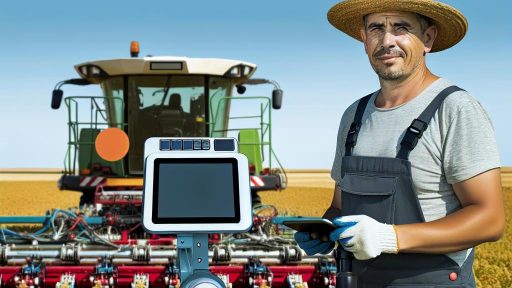Identifying Common Faults in Automated Machinery
Understanding Basic Issues
Automated machinery can encounter several basic issues.
These problems may arise from electrical, mechanical, or software failures.
Recognizing these issues early can prevent downtime.
Electrical Problems
Electrical faults are common in automated machinery.
They can result from faulty wiring or malfunctioning components.
Regular inspections can help identify these issues quickly.
Additionally, checking for loose connections is crucial.
Power surges may also damage electrical systems.
Mechanical Failures
Mechanical failures often stem from wear and tear.
Components like belts or gears may require periodic replacement.
Lubrication helps reduce friction and prolongs lifespan.
Regular maintenance should include checking all moving parts.
Corrosion and rust can also contribute to mechanical issues.
Software Glitches
Software glitches can disrupt automation processes significantly.
Debugging software helps identify and resolve these issues.
Transform Your Agribusiness
Unlock your farm's potential with expert advice tailored to your needs. Get actionable steps that drive real results.
Get StartedUpdating software regularly ensures optimal performance.
Training staff on troubleshooting can reduce service disruptions.
Moreover, documenting software changes aids in identifying reoccurring problems.
Sensor and Calibration Errors
Sensors play a critical role in machinery operation.
Calibration errors can lead to inaccurate readings and malfunctions.
Regular calibration checks prevent significant operational issues.
Additionally, ensure sensors are clean and unobstructed.
False readings may trigger unnecessary alarms or machinery shutdowns.
Environmental Factors
Environmental factors can affect automated machinery performance.
Temperature and humidity levels play significant roles.
High dust levels may lead to component failure.
Protective enclosures can cushion machinery from harmful elements.
Monitoring environmental conditions is essential for optimal performance.
Understanding Error Codes and Diagnostic Tools
Importance of Error Codes
Error codes provide essential information about machine issues.
They help technicians identify problems quickly and efficiently.
Understanding these codes can save time during troubleshooting.
Common Error Codes
Automated machinery often displays standardized error codes.
Examples include motor failure and sensor malfunctions.
Familiarity with these codes allows for rapid resolution.
Using Diagnostic Tools
Diagnostic tools aid in the identification of machine issues.
They provide real-time data and status reports on equipment.
Common tools include handheld scanners and software applications.
Steps to Use Diagnostic Tools
Begin by connecting the diagnostic tool to the machinery.
Next, scan for error codes and review the generated report.
Showcase Your Farming Business
Publish your professional farming services profile on our blog for a one-time fee of $200 and reach a dedicated audience of farmers and agribusiness owners.
Publish Your ProfileFinally, compare results with the machinery’s manual for clarity.
Interpreting Reports and Codes
Interpreting reports is crucial for effective troubleshooting.
Focus on the most critical errors first.
Additionally, consult the manufacturer’s documentation for guidance.
Seeking Professional Help
If issues persist, consider reaching out to professionals.
Experienced technicians can provide advanced troubleshooting techniques.
Choosing to consult experts minimizes potential repair costs.
Regular Maintenance Practices to Prevent Failures
Establishing a Maintenance Schedule
Creating a regular maintenance schedule is essential for all machinery.
This schedule should outline daily, weekly, and monthly tasks.
First, review the manufacturer’s recommendations for your equipment.
Next, establish clear timelines for inspections and servicing.
Consistency helps catch potential issues before they escalate.
Conducting Regular Inspections
Routine inspections identify any wear and tear on machinery.
Focus on critical components during these assessments.
For example, examine belts, gears, and electrical connections closely.
Document findings to track performance over time.
Finally, address any identified issues immediately to prevent failures.
Implementing Lubrication Practices
Regular lubrication keeps machinery operating smoothly.
Follow the manufacturer’s guidelines on types and intervals for lubrication.
Incorporate lubrication checks into your maintenance schedule.
Additionally, use high-quality lubricants to enhance equipment performance.
Moreover, ensure all moving parts receive proper grease or oil application.
Training and Educating Staff
Proper training is crucial for staff operating automated machinery.
Educate employees on safe operating procedures and maintenance tasks.
Encourage team members to report any unusual machine behavior.
Regular training sessions can help maintain high levels of awareness.
Ultimately, knowledgeable operators can prevent mishaps effectively.
Using Technology for Maintenance Tracking
Adopting technology can streamline maintenance processes.
Implement software solutions for tracking maintenance activities.
Such tools can send reminders for upcoming tasks and inspections.
Furthermore, data analytics can predict maintenance needs based on usage.
This proactive approach minimizes downtime and maximizes productivity.
You Might Also Like: A Farmer’s Guide To Utilizing Drones In Agriculture
Troubleshooting Electrical Issues in Automated Systems
Identifying Common Electrical Problems
Electrical issues can disrupt automated machinery significantly.
Recognizing these problems early is crucial for efficient operation.
Common problems include short circuits, overloads, and faulty wiring.
These issues might stem from improper installation or wear over time.
Understanding Short Circuits
Short circuits occur when electricity flows unexpectedly through a low-resistance path.
This can lead to equipment damage or safety hazards.
Inspect wiring for insulation damage and ensure connections are secure.
Showcase Your Farming Business
Publish your professional farming services profile on our blog for a one-time fee of $200 and reach a dedicated audience of farmers and agribusiness owners.
Publish Your ProfileUsing a multimeter can help identify hidden short circuits.
Dealing with Overloads
An overload occurs when too much current flows through a circuit.
This often results from exceeding the rated capacity of equipment.
Check the load requirements of your machinery regularly.
Consider upgrading your circuit if overloads are frequent.
Testing for Faulty Wiring
Faulty wiring can lead to intermittent failures in automated systems.
Ensure that all connections are tight and free from corrosion.
Visual inspections can uncover wear and loose connections.
Replacing damaged cables is essential to prevent future issues.
Utilizing Proper Diagnostic Tools
Effective troubleshooting requires the right tools.
Multimeters help measure voltage, current, and resistance.
Oscilloscopes can analyze waveforms and electrical signals.
These tools aid in pinpointing issues within the electrical systems.
Implementing Preventive Measures
Regular maintenance can prevent many electrical issues.
Schedule routine inspections to identify potential problems early.
Keep the machinery clean to minimize dust and debris buildup.
Training staff to recognize signs of electrical failures is vital.
Consulting with Professionals
Sometimes, consulting with a specialist is necessary.
Experience can make a significant difference in troubleshooting.
Consider hiring a licensed electrician for complicated issues.
The investment can save time and prevent costly repairs.
Discover More: Precision Agriculture Software Optimizing Sustainable Farm Management
Addressing Software Glitches in Automated Machinery
Identifying Common Software Glitches
Software glitches often arise in automated machinery.
They can manifest as unexpected behavior or errors.
Monitoring performance can help identify these issues early.
Regularly check system logs for any anomalies.
Root Causes of Software Issues
Several factors can contribute to software glitches.
Incompatibility between software versions can cause conflicts.
Memory overload from insufficient RAM may also create problems.
Bugs in the code can lead to system crashes and malfunctions.
Steps to Troubleshoot Software Glitches
Start troubleshooting by restarting the automated system.
Rebooting often resolves temporary software glitches.
Next, ensure that all software updates are applied.
Updates frequently include patches for known bugs.
Conducting a Comprehensive System Check
Run diagnostic tools to assess system health.
Diagnostic tools can pinpoint specific errors in the software.
Check the hardware connections to ensure proper function.
Faulty hardware can sometimes mimic software issues.
Seeking Expert Assistance
If issues persist, it may be time to consult a specialist.
Experts can provide advanced troubleshooting techniques.
Showcase Your Farming Business
Publish your professional farming services profile on our blog for a one-time fee of $200 and reach a dedicated audience of farmers and agribusiness owners.
Publish Your ProfileThey can also help with complex software configurations.
Consider contacting the machinery manufacturer’s support team.
Implementing Preventive Measures
Develop a routine maintenance schedule to prevent issues.
Regular maintenance helps keep software in optimal condition.
Train staff on common troubleshooting techniques.
Empowered staff can address minor issues quickly.
See Related Content: Optimizing Farm Operations Through IoT Technologies

Optimizing Calibration and Setup Procedures
Importance of Proper Calibration
Calibration ensures that automated machinery operates accurately.
It helps maintain consistency in output quality.
Improper calibration can lead to costly errors.
Regular checks can prevent these issues from escalating.
Initial Setup Steps
Begin with a thorough inspection of the machinery.
Ensure all components are installed correctly.
Check that all electrical connections are secure.
Review the manufacturer’s guidelines for setup.
Conducting Effective Calibration
Use precisely calibrated tools for adjustments.
Always refer to the specifications provided by the manufacturer.
Document each calibration step to track changes.
Test after every change to confirm accuracy.
Regular Maintenance Practices
Schedule routine maintenance to identify potential issues early.
Replace worn-out components before they cause failures.
Keep a log of all maintenance and calibration activities.
Collaborate with experienced technicians for troubleshooting.
Utilizing Technology for Calibration
Employ software tools designed for calibration management.
These tools can help streamline the calibration process.
Implement sensors that provide real-time data on machinery performance.
Analyze the data to make informed adjustments.
Uncover the Details: Implementing AI And Machine Learning In Crop Disease Detection Systems
Resolving Mechanical Failures: Tips and Techniques
Identifying Mechanical Issues
Start by observing the machinery closely.
Look for any unusual noises during operation.
Additionally, check for signs of wear or tear.
Take note of erratic performance patterns.
Document any operational anomalies you encounter.
Assessing Common Failures
Mechanical failures may arise from various sources.
Check for misalignment in moving parts.
Examine the lubrication system for deficiencies.
Inspect electrical connections for faults.
Look for signs of overheating or overheating components.
Implementing Preventative Measures
Regular maintenance is crucial.
Schedule routine inspections to catch issues early.
Showcase Your Farming Business
Publish your professional farming services profile on our blog for a one-time fee of $200 and reach a dedicated audience of farmers and agribusiness owners.
Publish Your ProfileUse quality lubricants to maintain smooth operation.
Incorporate training for operators on best practices.
Establish a detailed log of maintenance activities.
Utilizing Proper Tools and Techniques
Use the right tools for repairs to avoid additional damage.
Follow manufacturer guidelines for reassembly.
Consider using laser alignment tools for precision.
Employ vibration analysis to detect issues effectively.
Seek assistance from qualified technicians when necessary.
Documenting and Learning from Failures
Keep a record of all mechanical failures.
Analyze these records for patterns or recurring issues.
Use this information to improve maintenance schedules.
Encourage a culture of reporting and discussing failures.
Learning from issues can lead to innovative solutions.
Best Practices for Safety During Troubleshooting
Preparation is Key
Always assess the work area before beginning troubleshooting.
Ensure that all necessary tools are accessible and functional.
Review the machine’s manual for specific safety instructions.
Moreover, wear the appropriate personal protective equipment (PPE).
Establish a Lockout/Tagout Procedure
Implement a lockout/tagout (LOTO) system to prevent accidental machine startup.
This method ensures that machines remain powered down during repairs.
It is crucial to inform all relevant personnel of the lockout status.
Conduct a Risk Assessment
Identify potential hazards associated with the machinery and environment.
This step helps in developing strategies to mitigate risks.
Consider factors like electrical hazards and moving parts during this assessment.
Communicate Effectively
Clear communication among team members is vital during troubleshooting.
Share any observed issues immediately with the team.
This practice fosters a safer troubleshooting environment for everyone.
Stay Focused and Alert
Avoid distractions while troubleshooting automated machinery.
This focus helps in identifying issues accurately and promptly.
Furthermore, take regular breaks to avoid fatigue-related mistakes.
Document the Process
Keep a detailed record of issues encountered during troubleshooting.
This documentation aids in future diagnostics and preventive measures.
In addition, it provides valuable insights for team training sessions.
Follow Up on Repairs
Once issues are resolved, review the repair work thoroughly.
Test the machinery under controlled conditions to ensure safety.
Finally, keep stakeholders informed of the operational status.




